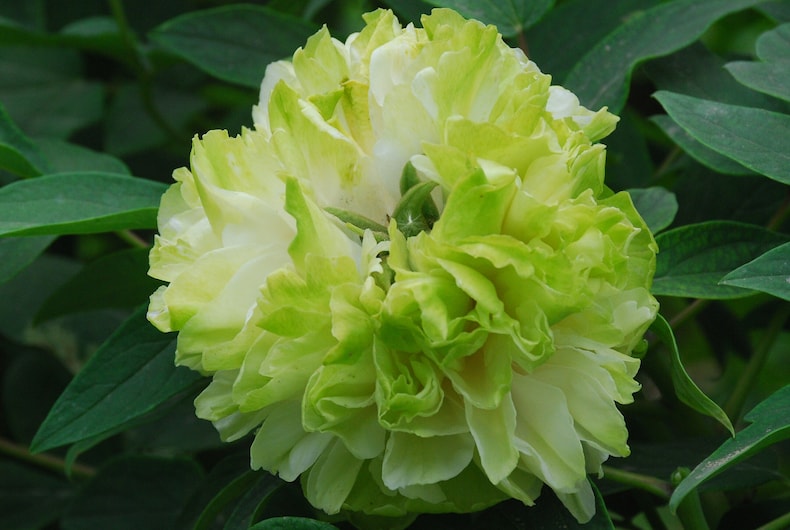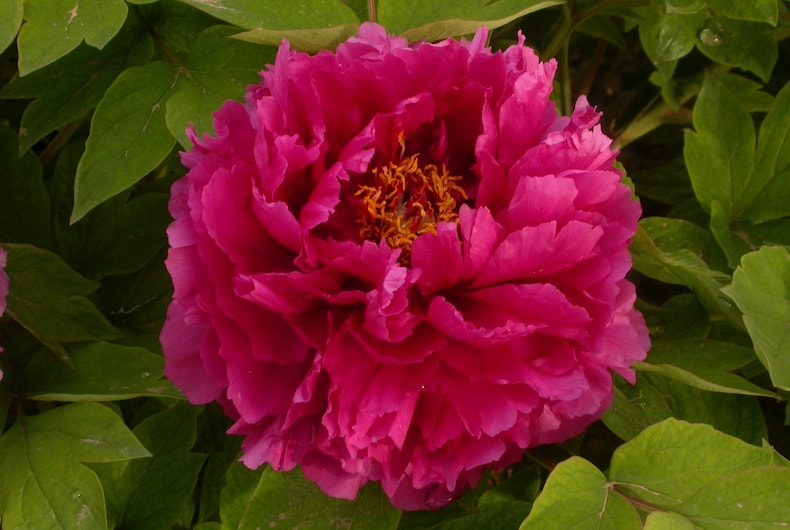
How to prune tree peonies
Tree peonies (or Paeonia suffruticosa) are hardy, deciduous shrubs that produce hundreds of large exotic flowers each spring. They should not be confused with herbaceous perennial peonies, which die right back to the ground each year.
Long-lived and spectacular, tree peonies require little maintenance beyond deadheading. But should your mature shrub outgrow its space or become leggy and unproductive, here’s how to prune it correctly.
When to prune a tree peony

Enjoy the exquisite lime green and cream blooms of this tree peony from April to June
Image: Tree Peony 'Lu Mu Ying Yu' from Thompson & Morgan
Tree peonies can take time to become well established so new plants are best left untouched for the first couple of years. After that, they require very little pruning beyond deadheading and the removal of any dead wood. Use a pruning saw or loppers and a sharp pair of secateurs.
In summer, deadhead the flowering shoots once the flowers have faded. If you want to collect seed, leave some of the faded flowers until the autumn.
As with many long-lived shrubs, tree peonies can outgrow their allotted space and old wood may become leggy or unproductive. If this is the case, careful pruning can reduce the size and reinvigorate your plant.
The best time to prune a tree peony is spring, before new growth starts, as this will stimulate the shrub to grow back strongly. However, this does mean sacrificing some of that year’s flowers. If you don’t want to lose any flowers, prune your shrub in the autumn, but be prepared for regrowth to be slower.
How to prune a tree peony

Tree peonies are best pruned in spring
Image: Tree Peony 'Luoyang Hong' from Thompson & Morgan
Keep your mature tree peony looking its best with these few simple tips:
- First, remove any dead wood back to a healthy bud.
- To improve the shape of your tree peony or reduce its size, cut a few stems back to new buds at soil level, or to within 15cm of the ground.
- To stimulate plants to produce more bushy growth, cut leggy stems back by a third.
- Old and neglected plants can be rejuvenated by taking out one or two old stems to ground level. Do this over several years to minimise the impact.
We hope these tips will keep your tree peony in excellent shape so that it continues to give you a spectacular spring display for many years to come.
See all pruning guides
Individual guides
Flower & Shrubs
- Pruning Buddleja
- Pruning Camellias
- Pruning Clematis
- Pruning Fuchsias
- Pruning Hydrangeas
- Pruning Hypercium - St Johns Wort
- Pruning Lavender
- Pruning Magnolias
- Pruning Passion Flowers
- Pruning Rhododendron
- Pruning Ribes Sanguineum
- Pruning Rosemary
- Pruning Roses
- Pruning Wisteria
- Pruning Asparagus
- Pruning Blueberries
- Pruning Goji Berries
- Pruning Honeyberries
- Pruning Raspberries
- Pruning Apple trees
- Pruning Box and Yew trees
- Pruning Catalpa trees
- Pruning Christmas trees
- Pruning Olive trees
- Pruning Patio Fruit trees
- Pruning Pear trees
- Pruning Plum trees
Fruit & Veg
Trees

Written by: Mandy Bradshaw, the Chatty Gardener
Cotswold-based Garden Media Guild member, Mandy Bradshaw, is also known as the Chatty Gardener. Passionate about gardening and writing, her beginnings are in football reporting for her primary school, and Mesembryanthemum planting with her mother. Winner of the 2018 Property Press Awards 'Garden Journalist of the Year', she writes for not only her own blog but also a range of newspapers, magazines and other gardening and non-gardening sites.Banner image: Flower_Garden/ Shutterstock
Sign Up For Exclusive Special Offers




© 2024 Thompson & Morgan. All rights reserved. A division of Branded Garden Products Limited.



